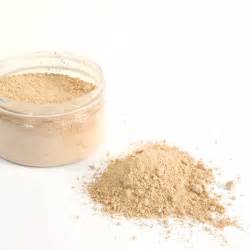

1,will not produce fog blue (wash is not clean) and so on?
Causing the so-called fog or blue, most of the reason is because the flat grinding or sweeping after the glass, because there is no clean and residual part of the results caused by polishing powders. Then the general inspection from the cleaning of this link to find the reasons, the first check the concentration of cleaning agent, batch, replacement time, etc., the second check the cleaning agent of the ultrasonic equipment is working properly, the third polishing powders in the flat after the mill to clean Before the process, whether prolonged exposure to air lead to polishing powders dry on the glass (especially hot and dry summer), the above points, one by one can be resolved to solve most of the fogging situation.
2, how is the suspension of the polishing powders?
Many customers habitual use of suspension as the basis for judging the quality of the polishing powders, the so-called suspension is polished powder mixed with water after the uniform, the polishing powders in the precipitation of the length of time, precipitation quickly shows the suspension is not good, if the precipitation The slowness of the description of the suspension is good. This point of view is problematic, should be based on the dispersion effect to determine the suspension, that is, when the polishing liquid standing for more than two hours after the precipitation phenomenon, in the case of slightly agitated immediately restore the original suspension effect, rather than produce sediment agglomeration Do not stir the situation. Many polishing powders manufacturers are accustomed to the use of suspending agent to improve the suspension of the way, but if the suspending agent added too much or match is not good, prone to gel (polishing powders condensate) and corrosion of the hand situation. We attach great importance to the suspension, it is necessary to ensure the suspension, but also to ensure safety and no glue, do a lot of experimental verification. In addition the impact of water quality on the suspension is also more obvious, pure water and tap water against the polishing liquid contrast is very obvious, it is recommended to use the filter or pure water against the polishing powders. (Each cover factory has a pure water production device, because the ultrasonic cleaning agent needs to use pure water)
3, the consumption of polishing powders is not big (resistant to durable?)
This problem is also more common, some manufacturers will use the brand A polishing powders, a machine only need to add a class 0.5KG, with the brand B will need 0.7 or more. First of all need to figure out whether this situation is caused by the use of workers operating habits, each brand of polished powder after the concentration of water is not the same, many workers used to use the feeling or experience to determine the concentration, the exact approach is With a concentration meter for testing, the normal use of the concentration of flat grinding 1.07-1.1, sweeping 1.2-1.3. Second, if the polishing powders consumption too fast (that is, the polishing solution concentration is relatively fast) can be removed from the precipitation and kneading aspects. We have not heard so far that customers have responded with too fast feedback.
4, how much polishing powders particle size?
Particle size is the standard of this industry to divide the polishing powders. The particle size refers to the diameter of the polishing powders particles in μ, and the common polishing powders particle size varies from 0.6 to 3.2, and is usually between 1.0 and 2.0 , According to experience can probably determine the small particle size suitable for flat grinding, such as 1.0,1.2,1.4; large particle size suitable for sweeping such as 1.6,1.8,2.0, etc., or ultimately according to the customer's habits to be used. Particle size is proportional to the cutting force, the larger the particle size, the stronger the cutting force, and vice versa. Each polishing powders has several particle diameters, but the uniformity of the particle size distribution requires the production level to control, the high level of production can be as much as possible to increase the proportion of standard particle size, reduce the maximum and minimum particle size range And the proportion. For example, some product labels are 1.2, but in fact 1.2 particles accounted for only 30% of the overall or less, the other particles uneven, even the smallest 0.6, the largest 5.6, resulting in increased rate of decline in the situation.